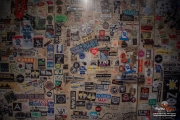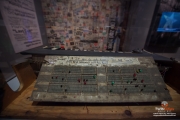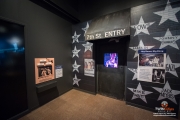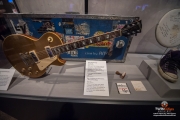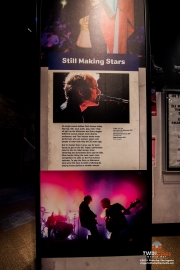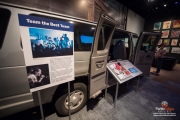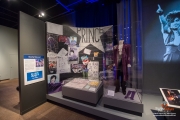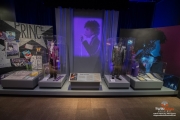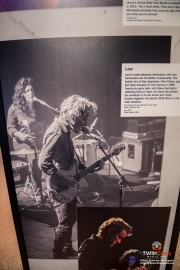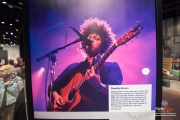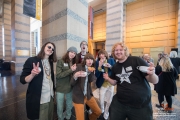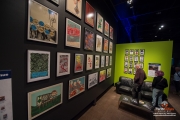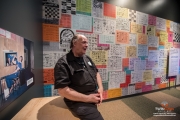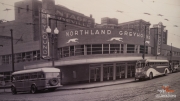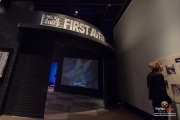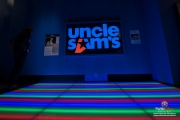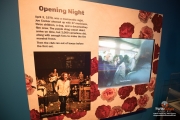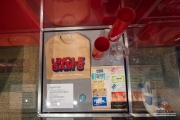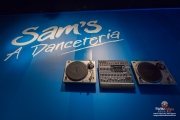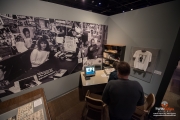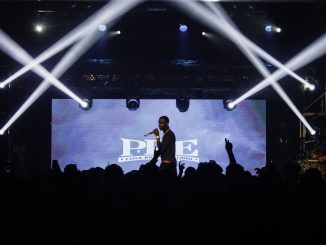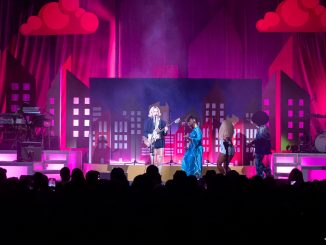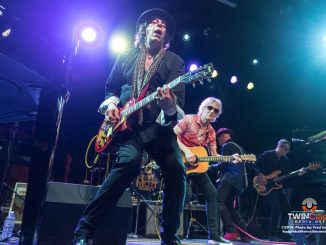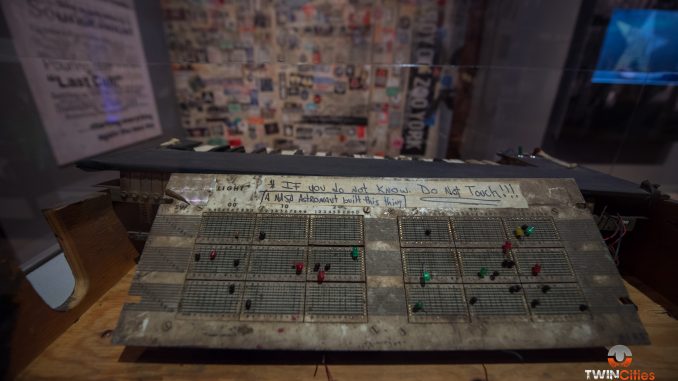
The Minnesota History Center premiered its newest special exhibit on Saturday. First Avenue: Stories of Minnesota’s Mainroom is, in a word, wonderful! The exhibit is slated to remain open for a full year. Hopefully, every Minnesota Music fan will find the time to enjoy it. Details can be found HERE.
Over the years, I’ve attended any number of museum special exhibits. Ranging from Treasures of the Smithsonian, to Monet collections, to 1968 to King Tut; they are always enlightening and entertaining. Special exhibits take the time to collect and curate material and memorabilia of a time and place that matters. The care that goes into their creation always shows a little extra passion and love than what we normally experience with a static collection. Special exhibits are as cool as they are fleeting.
If you are somebody who happens to be reading this piece through Twin Cities Media, we already know about your love of live music. This is preaching to the choir. It’s hard to imagine anything more entertaining for the music nerd. If you share any kind of connection to the Minnesota Music scene, this thing is a home run.
As one walks into the exhibit, you are immediately greeted by a short film collage of bands of every shape, size and color that have graced the Mainroom stage over the past 40+ years. It’s a quick overture to what you will find when you round the corner into the body of the collection.
It begins in the beginning. Before First Avenue was First Avenue, it was the Minneapolis bus station. In the late 1970’s, it became Uncle Sam’s. Sam’s set out to provide a showcase for high end rock acts as an antidote to the disco craze which was sweeping the nation. Here we see footage from that opening night, the legendary Joe Cocker arriving with a 27 person band/entourage for a sold out show. Thankfully, the band arrived before the planned purple shag carpeting which never got installed. To say the club launched on a wing and a prayer is an understatement. The bar ran out of booze by the time Cocker’s first set commenced.
Sam’s success as a rock nightclub, was short-lived. Dance clubs, rather than live music venues, were the landscape we endured during those years. Sam’s could see the writing on the wall and quickly shifted gears to become a popular discotheque. Minneapolis’ “Club 54 for the discriminating K Mart shopper“, as one wag put it.
The floor was lit. The drinks, exotic. Anything to try to create a buzz. Right down to the ill-conceived idea of putting a swimming pool in the middle of the floor. Unfortunately, no amount of alcohol in the signature Sam’s Firecracker cocktail was enough to get the patrons to shed some clothes and start a pool party.
All the while during that disco craze, what became First Avenue’s legendary crew of DJ’s, primarily Kevin Cole, and still working, oldest tenured employee Roy Freedom, continued to push new music. Music that appealed to their remarkable and eclectic tastes. One of my favorite little items was a memo sent to them by management laying down the new ground rules. They were to follow a tried and true formula of true rock classics and Top 40 dance music. Little room was provided for what they did best; expose Minnesotans to a dizzying array of new sounds. Lucky for all of us, the memo was largely ignored.
Sam’s was on its way to changing hands at about the same time that King Solomon’s Mines, the only African American downtown nightclub was being shuttered. Another in a shameful history of thinly veiled racism. The role that Sam’s/First Avenue played in providing an integrated space for music lovers cannot be overstated. First Avenue was willingly shared by music lovers of all colors and still is today. Patrons were, and remain, smart enough to know that great music is color blind. It is no accident that years later Prince’s Purple Rain was shot in that location.
History mistakenly recalls that the epic punk rock scene that exploded out of the Twin Cities in the late 70’s and early 80’s launched from First Avenue’s Mainroom. Suicide Commandos, Husker Du, Suburbs, Tetes Noires, The Cows, Hypsters, Flamingo, Flamin’ O’s, Babes In Toyland, The Replacements, Soul Asylum, to name just the best known. However, that happens to be urban legend. What was once the snack bar/coat room for the club became the legendary 7th Street Entry. While those discriminating K Mart shoppers swooped and swayed in the big room, the punks were smashing into each other in the little black box with the big sound system.
Only places like New York’s CBGB can stake a claim to having the kind of impact the Entry did. Patrons reminisce about opening that door from that tight black box and immediately stepping into the pulsing lights and throbbing bass of the dance hall. Musicians all remember their first Entry performance. Prelude to someday reaching that legendary big stage.
As someone who has spent many nights in that small room (it may be my favorite performance spot on the planet), the love shown to the importance of The 7th Street Entry was very satisfying. It’s a place that has always allowed us to get up close and personal with our music heroes. It’s the place where we catch the next big thing. When club photographer Dan Corrigan gives us an inside look at all the “behind the scenes” of the club, he proudly states that the role The Entry plays has never changed. In 2018, it hosted an amazing 360 shows. All told nearly 1,000 bands. Corrigan chuckles: “We always say that it’s the place for all the stars who are on the rise…or fall”.
As one would expect, special attention is given to Prince and the making of Purple Rain; the film which launched both parties into the realm of super stardom. Prince’s purple coat stands beside the black and silver finery of the Time’s Jelly Bean Johnson. A short movie accompanies memories and memorabilia from his passing. Beneath a photo of First Avenue employees sweeping clear a pre-dawn, wet 7th Street after the impromptu street dance following his death, Leah Preble wrote: “I stood for a moment looking at all the purple lights reflecting off the wet sidewalk and it struck me that I was literally standing in Purple Rain. It was as if Prince was saying goodbye and I couldn’t help but smile and shed a few tears as I watched the rain fall.”
It’s an emotional part of the exhibit and I was not the only one who I saw wiping away a tear.
Turn and you find a battered, silver E350 Econoline van. The trusty steed that has carried (and occasionally broken down with) all those young touring bands over the years. In this case, the Econoline’s name was Mountain. Because all band vans get christened. For years, this one was the way a young Doomtree Collective got about. Dessa, Razorbeak and P.O.S are there to tell the stories. A puzzle game to see how much stuff can get crammed into a van entertains the younger patrons.
I also particularly enjoyed a small theater space laid out as replica to the Mainroom. The screen rises, just as it does at shows throughout history. We are treated to rare footage and current interviews from established local legends who share their memories. The Twin Cities has launched a dizzying array of artists onto world stages. To this day, playing First Avenue remains one the most gratifying things these artists do. It connects them to the beginning. To a time, a scene and a camaraderie that cannot be found anywhere else on the planet. As Maria Isa states at the film’s conclusion: “It’s Home.”
Near the exit is a wire display board with notepads and pencils. Fans are invited to write and hang their favorite memories. I didn’t get through nearly all of them. It would be like trying to read every note left to Prince on the Paisley Park fencing. But there were some amazing ones. Comments, not just about a particular show, but about life changing meetings or events. First Avenue has meant so much to so many of us here in Minnesota. It is the centerpiece of the best music scene in the country.
Attend this exhibit! It won’t take you a long time. You can fully absorb it in an hour or two. If you’re on a budget, do it like I did. Show up on a Tuesday at 3pm. It’s free then. Go with your friends. Take your family. Everyone will find something different to love. I attended with two family members, a young working musician already fully immersed in the legend and a 12 year old. For the younger ones, there are a number of wonderful exhibits ongoing at The Minnesota History Center. Simply set them on their own course of discovery. They will be perfectly entertained learning about the fur trade, how our cities developed or what it’s like to sit in a basement during a tornado. They’ll give you all the time you need to read every word and look at every picture.
Perhaps most importantly, you will walk away from the exhibit understanding that this is not about the past. It is an exhibit of what is. Of what continues to be. If you’re a music fan, you already know that the First Avenue brand and juggernaut is more vibrant today than at any time in its storied history. If this is news to you, my hope is that you will finally see a First Ave show. Or that you’ll return again after many years.
Few things in life allow family generations or people from different communities to bond in the same way we do over live music. In our midst are two of the most iconic music rooms in history. If you’re already hip to this fact, you’ll love this exhibit. If this is news to you, you’ll understand why so many of us feel this way. I promise, you’ll walk out of Stories of Minnesota’s Mainroom and pull up the First Avenue calendar to see what’s coming next.


